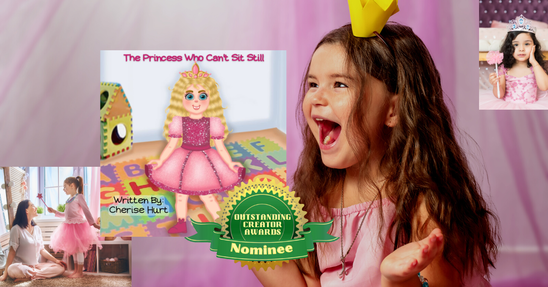|
Score: 92/100 (9.2 out of 10)
We really ended up enjoying The Princess Who Can't Sit Still, an adorable and inspiring children's book by Cherise Hunt about a precocious, hyperactive girl who copes with being different from other kids. We'll be honest, about 70%+ of the appeal of most children's books is the art/illustrations. Art that's wonky or imperfect in some way can really hurt its appeal. Well, this book is an example of why you should never fully judge a book by its cover or its illustrations. This book has “it” in other areas that matter: heart, soul, relatability, brevity, and intelligibility. We can compare it directly with other children's books we read that had superior art, yet hurt themselves by being overly complicated, overly long, and difficult for the target audience to understand. The art is a bit rough, especially the main protagonist. Both her head and legs seem a bit warped or wonky, as if formed by an unsteady hand. The best illustrated thing in the book, humorously, is the earthworm. However, like we said, this book is able to overcome its less than ideal artwork and be great in other ways. One way in which this book shines is that its text is actually legible and digestible. It appears in blocks and the font is “lifted” and bolded to make it easier to read. Brilliant! We've just gone through two children's books with fonts or formatting that made the text difficult to read. This book isn't like that. The thing we love the most about this book is that it has real-life, real-world applications, particularly for children. ADD & ADHD are serious issues inflicting millions of children around the world. Some of us have suffered from these or know kids who suffer with these. And ADD & ADHD aren't the only issues inflicting children. Some suffer from autism, dyslexia, dyscalculia, speech impediments, etc. While these issues aren't the focus of the book, the book's message could extend to these too. The thing is, part of maturing is realizing that we're all unique and different, but that doesn't mean we're necessarily bad, unworthy, unwanted, or undesirable. In fact, being “different” can be a good thing. That's where new ideas and innovation comes from. In this book, you see how the main character is treated because she “acts out” by being overly excited and hyperactive. She is basically reprimanded and sent to detention or time out. We empathize with her. One of the hardest things about growing up in a traditional school environment or an overly strict home is feeling like you're in prison and stepping on egg shells all the time. It's a rough way to live. And it hits kids hardest. This book comes up with a great solution: take a “wiggle” break or have a recess. Getting the wiggles out is such a great concept. It's a very practical solution! If you have some hyperactive kids who need to get their wiggles out, you should check this out on Amazon!
0 Comments
Leave a Reply. |
Archives
July 2024
Categories |

 RSS Feed
RSS Feed